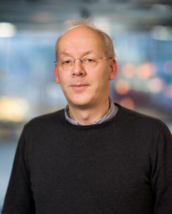
Time:10:00,October 28, 2019
Venue: 441 conference room, School of materials science and engineering, Jiading Campus
Topic:The role of moisture in fire spalling of concrete
Lecturer:
Leo Pel is an Associate Professor in the group transport in Permeable Media at the Department of Applied Physics, Eindhoven University of Technology (TU/e). He obtained his MSc in Applied Physics and received his PhD from the Department of Architecture, Building and Planningat TU/e for his thesis ‘Moisture transport in porous building materials’ in 1994. Following this, he worked as a Postdoctoral Researcher on development of a measurement method to determine moisture transport processes in porous materials. In 2006, he was a Visiting Researcher at the J. Paul Getty Museum and in 2008 he was a Visiting Fellow at Princeton University at the group of George Scherer. He is involved in various national and international projects focusing on understanding the durability of porous materials. In addition, he has taken part in various EU programs focusing on the conservation of our cultural heritage.
Abstract:
The question how concrete responds to a fire is one of the main questions in fire safety. During a fire, a building material can suddenly be heated up to temperatures well above 1000℃. At temperatures above 100℃ water inside the pores will start to boil. Simultaneously, in concrete, but also for example in gypsum, chemically bound water will be released by dehydration of the porous matrix. If the concrete has a low permeability, the vapour pressure inside will increase which can give rise to a sudden (explosive) failure of a material. Numerous heat and mass transfer models have been used to predict the moisture transport and its consequences on the strength and permeability of the concrete. However, these models are only of use if they can be validated. By using NMR we can get direct insight into the processes taking place and hence give as a tool to develop a simple model to determine the pressure build up. These measurements gave the first quantitative proof for the build-up of a moisture peak due to the vapour pressure build-up, which will be explained.
火焰作用下混凝土性能与结构是如何响应的是防火安全中的一个重要问题。建筑材料在火焰的作用下,可瞬间升温至1000摄氏度以上。不难想象,高于100摄氏度以上,建筑材料内部的水分会处于气化状态。同时,混凝土中的组分(以石膏为例),化学结合水亦会在脱水作用下通过孔隙释放。如混凝土的渗透性较低,混凝土内蒸气压的激增势必会导致材料结构与性能的瞬间劣化(或爆裂)。以往研究应用了不同传热与传质模型以预测水分传输特征,探索了水分传输特征对于混凝土力学性能与渗透性的影响。但由于研究方法的限制,这些模型均未被试验数据所验证,因而导致相关研究成果缺乏普适性。本研究利用核磁共振技术,得到了关于火焰作用下混凝土水分迁移最为直接的信息,发展了一种关于蒸气压升高的简易模型,并首次定量性地发现了蒸气压作用形成的水分信号峰,进一步结合试验数据,本研究对水分信号峰产生原因及影响因素进行了深入的讨论。